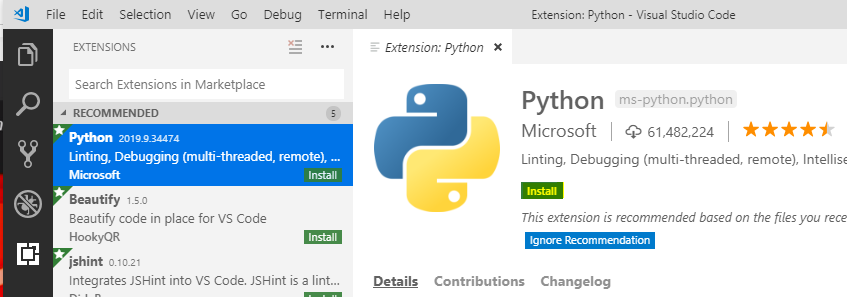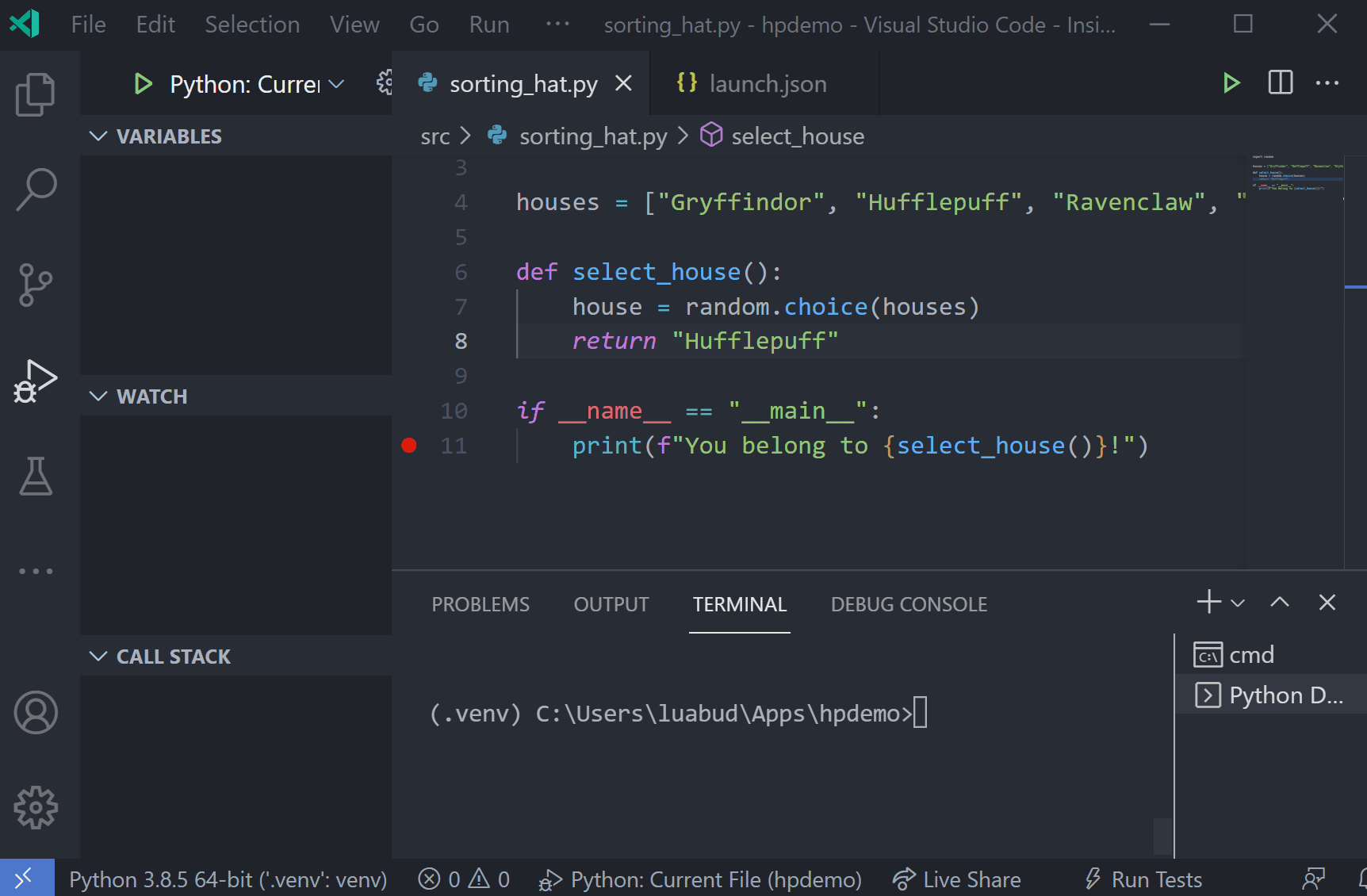


VSCode even detects a virtualenv in your project folder, and this virtualenv also contains a Python interpreter, which VSCode can use. VSCode usually does its best to detect the available Python interpreters automatically. Using the right interpreter for your project is important since VSCode uses it to run and debug your code and provide things like auto-completion. Step 1: Select python interpreterĪ system can have multiple Python interpreters. The following step-by-step guide helps you to set up VSCode correctly for running Python code. vscode directory to the ignore list since your coworkers probably prefer other settings and preferences or even use a completely different IDE. If you use a version control system, you may want to add the. vscode/settings.json, containing these project-specific settings. If you define project-specific settings in VSCode, the IDE creates a new file. If you prefer, you can also open the folder from the menu: File -> Open Folder. The code command is a handy shortcut to open a VSCode window. If you are on a terminal, and it doesn’t matter if this is on Linux, MacOS, or Windows, you can create a new project and open it with VSCode as follows: $ mkdir myproject When doing so, one window with one workspace will suffice.Ĭreating a project is simple it’s a directory that you open with VSCode. However, you’ll typically work on one project at a time. You can have multiple workspaces open, each in its own window. A workspace can, in turn, show multiple folders (or: projects) if you want it to.



 0 kommentar(er)
0 kommentar(er)
